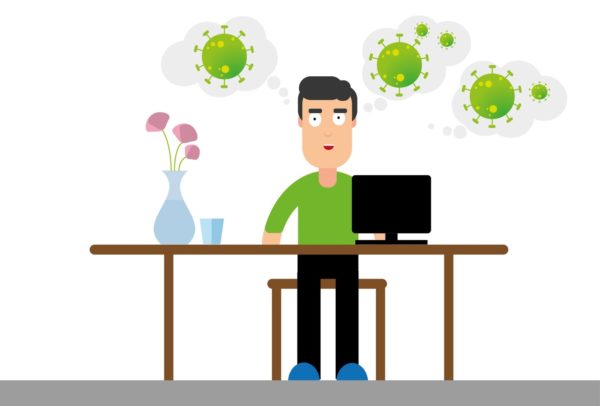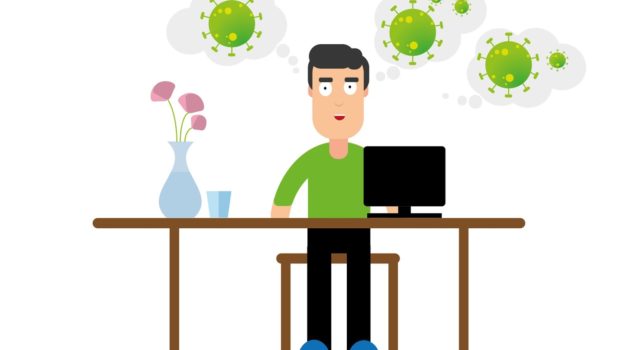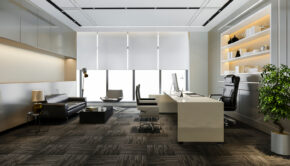How will office-space designs change in the post COVID environment?
Historical evidence suggests that society undergoes a massive transformation after a pandemic. It is true for the current pandemic as well. Experts have argued that COVID-19 will forever change the progression of human life.
It’s almost like one of those crazy astronomical super-events when a planet flips over in outer space for no reason. Its poles relocate, and the shape alters like its oblong instead of a sphere.
However, in this case, it won’t be the position of the planet that will be altered. Instead, our ways of life, our concepts of home, office, and mobility, and our practices will change. Of all the spaces that’ll undergo alteration, workplace design is the one that most people speculate about.
Going back to work, for most people, will feel a lot different than when they left off. Initially, it may feel surreal with no more hugs or handshakes, fist bumps, or high-fives, but the ramifications of the post-pandemic world will take some time to kick in.
The corporate world is fully aware of the upcoming modifications. Some companies are already questioning their traditional investment in expensive infrastructure.

Jed Walentas, the owner of Two Trees Management, talks about non-practical pre-COVID anticipations. In an interview with New York Times, he said, “If you got two and a half million people in Brooklyn, why is it rational or efficient for all those people to schlep into Manhattan and work every day?”
He further says it happened yesterday and not rational anymore. However, presumptions that working from home is the new “normal” will bring in many challenges, such as alienation and loss of community. Not to mention the lawn-mower running in the backyard and kids arguing in the next room, causing MAJOR distractions.
We will eventually return to a collective workplace. But it would be a massively changed workplace. In this blog, we have mentioned four changes that we will witness in our workplaces when we go back:
Socially-distanced Structure
The modern concept of open-office arrangement was made popular by architect Frank Lloyd Wright in the 20th century. He believed this design would democratize the workplace in the social and literal sense.
Few years down the lane, corporate experts still tout the same belief. They think that open spaces make it easier for coworkers to connect and collaborate.
Unfortunately, we won’t be able to implement an open-office structure once COVID-19 subsides. An investigation published by South Korea’s Centers for Disease Control reveals how easily the virus can spread in a crowded office space. Placing barriers is an effective way to deal with this issue.
There is no option but to space out the work desks and place barriers to prevent the virus particles from the transmission. In the meantime, an idea of distributed offices can also work for some companies. It involves abandoning a crowded central hub for a distributed set of smaller offices.
Having small groups of people working in collaboration will retain human connectivity but without the risk of massive exposure. Only a bunch of people must be present at work, and companies need to cap the staff number at about 30%, which is the sweet spot for social distancing, according to Albert De Plazaola, global strategy director at design firm Unispace.
As for the rest of the staff, authorities must look for better tools and technology to enhance their online work operations.
Hygienic Preferences
A study published in the New England Journal of Medicine revealed that the coronavirus could live on some nonporous surfaces like plastic for up to three days. Similarly, the large respiratory droplets released when someone sneezes or coughs can spread the virus.

Most experts forecast that in light of the growing awareness about contagious diseases, there will be a new kind of office structure – one that will share some similarities with hospitals.
The materials used in the office structure must be the ones that can withstand heavy cleaning using caustic products, such as solution-dyed carpets with moisture backing, etc.
Moreover, the post-COVID workspace structure must focus on cleaning rotations. We expect to hear more discussions on the installation of the UV filters, and touch-free technology like automatic sinks and doors, etc.
More Signs
Using a clear and consistent signage system can support public safety and promote a healthy workplace. Think of it as road marking, but for offices. From lines in the corridor to standing spots in the lift, all spaces are likely to have covered up with visual instructions.
WHO recently released a report instructing employers to get the workplace ready, and one of the instructions was to display posters with clear instructions on hygiene and social-distancing.

Source
A possible approach that we can implement involves encouraging employees to walk clockwise. It creates a one-way flow and minimizes the transmission. It is a strategy most hospitals also used during the COVID-19.
Rebuild
In the post-pandemic world, entities will inevitably need to rebuild their workplaces. The social-distancing guidelines threaten community connections in various ways. It includes prohibited assemblies, restricted face-to-face interactions, and curtailing chance encounters.
Striking a perfect balance between social distancing and communal feeling is a difficult task. It will require companies to make changes to their office designs, keeping in mind the social-distancing guidelines.
In the post-pandemic world, we will see companies hiring the services of architects and workplace technology experts to optimize their office space. Possible changes into office designs may include new layouts to help physical distancing feel more comfortable and adding new elements to workstations, like glass or any other transparent barriers. From new and improved restroom partitions to more breathable spaces, new office designs should be as efficient and hygienic as possible.
Also, a new finding suggests that proper ventilation can be the key to prevent the spread of COVID-19. A significant trend in the future workplaces can be the opening of the windows.
It may require the rebuilding of the controlled and sealed office units. All the office-climate control systems must be shut down in this regard.
Apart from these changes, some workspaces might need broader lobbies and doorways. Also, more people will prefer taking the staircase so that part of your office might need some tweaking as well.
Final Thoughts
Whatever happens in the months ahead, COVID-19 will create a lasting impact on the way we work and how workplaces function. Companies have no other option but to reinvent because volatility is inevitable.
Hence, we expect radical changes after the COVID-19. It will require some adjustments, but the societal perspectives are undergoing massive changes. There is no way but to accept and adapt.
















